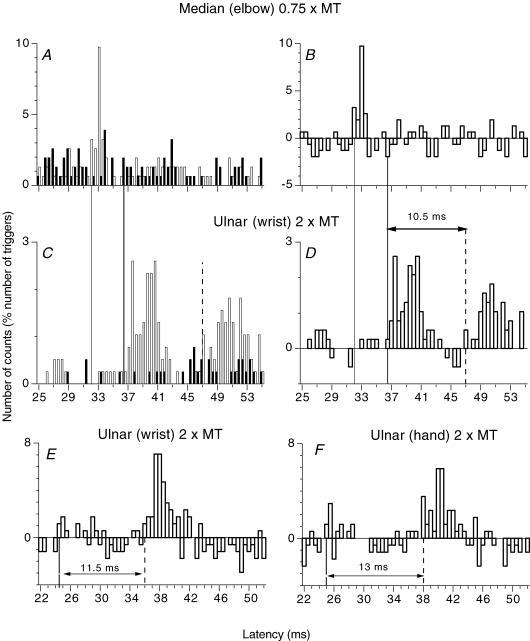Figure 1. PSTHs for a FDS motor unit: monosynaptic Ia and late high-threshold excitations.
A and C, post-stimulus time histograms (PSTHs; 0.5 ms bin width) for a flexor digitorum superficialis (FDS; supplying the head for the fourth finger) motor unit without (filled bars) and with (open bars) stimulation of the homonymous median nerve at elbow level (A, 0.75 × motor threshold (MT)) and of the heteronymous ulnar nerve at wrist level (C, 2 × MT). B and D, the difference between the histograms with and without stimulation. In this and Figs 1E and F,2, 3A, C and E,4A, and 7A and B, the number of counts in each bin (expressed as a percentage of the number of triggers) is plotted against the latency after stimulation. (Calculations for heteronymous monosynaptic latency: median – induced monosynaptic latency, 32 ms; distance between wrist and elbow stimulation sites, 0.305 m; conduction velocity in Ia afferents, 69 ms−1; supplementary afferent conduction time for the ulnar Ia volley, 4.4 (0.305/69) ms; ulnar-induced heteronymous Ia excitation expected at 36.4 (32 + 4.4) ms, corresponding to the latency (36.5 ms) of the early peak in C and D). E and F, effects of ulnar nerve stimulation (2 × MT) at wrist level (E) and 7 cm more distal (F, see Methods) are compared (another FDS unit than in A–D, the background firing has been subtracted) (Calculations for heteronymous monosynaptic latency: median – induced monosynaptic latency, 21 ms; distance wrist–elbow, 0.23 m; supplementary afferent conduction time for the ulnar Ia volley, 3.3 (0.23/69) ms; ulnar-induced heteronymous Ia excitation expected at 24.3 (21 + 3.3) ms, corresponding to the latency (24.5 ms) of the early peak in E). Vertical lines indicate the latency of homonymous Ia excitation (thin continuous line), heteronymous Ia excitation (thick continuous line) and late high-threshold excitation (dashed line). Horizontal double-headed arrows in D–F indicate the time interval between heteronymous monosynaptic Ia and late high-threshold group II excitation.

